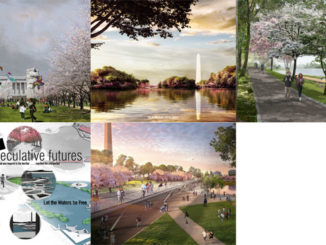There has been some recent discussion about architects and landscape architects salaries and fees after headlines in the UK reported that architects are paid less than building tradespeople (between £4000-10000 less per annum). The debate amongst architects has raged about minimum fees, fee scales and minimum pay for architects with some parties pushing for minimum fees whereas others are touting that it is not fees that are the problem but the profession needs to change its business model.
Many architecture and landscape architecture professional organisations around the world provided (and some still do) fee scales but many organisations have abandoned them either due to governments ruling that fee scales as anti-competitive and encourage collusion between professional groups or deemed them short-sighted as clients were using them to push down fees. These fee scales still exist but as institute practice notes or surveys, however, there has been flat growth in fees in many countries due to the financial crisis of 2008-2012 and other economic impacts. The lack of information and comparison has led to anecdotal evidence of projects being won (or bought) for low fees with some seeing it as a “run to the bottom” for project fee pricing, this usually only occurs when there is limited work or an oversupply of services.
This then raises the question should landscape architecture organisations (or governments) set minimum hourly fees or percentage fees (tailored to each region) to ensure that the market is consistent and allowing clients to compare like for like. Some may say that it is anti-competitive and that professionals should be set the price based on market demand, however, we have seen two financial crisis and a shift in scope creep and deliverables with clients often expecting more service for the same or slightly increased fees.
There are many arguments for minimum fees to allow for the protection of professionals (young and old) from downward pressures from developers and governments especially when there seems to be an increase in requirements for the services and skills to be provided for projects. If minimum fees are set then the profession may become uncompetitive with clients engaging architects and draftspeople to design landscapes especially in periods of economic downturn and when in many countries where the landscape architecture profession is not protected by legislation.
Providing a minimum fee scale may provide some comfort that we are “all playing on a level playing field” but it may only work for short period of time as eventually some landscape architects will charge less than the minimum due to a lack of work or working for smaller profit margins due to smaller firm size or outsourcing work. This would lead to landscape architecture or government organisations having to enforce the minimum fee regulations which in turn would create administration and costs that many organisations are not willing to bear. The alternative is for organisations and firms to work towards promoting the profession and the value it brings rather than policing the infighting over minimum fees. We all need to get more involved in providing more education and promotion to the public and clients about the value of landscape architecture and in turn, this will enable us to charge fees that are commiserable with the services we provide.
Article Written by Damian Holmes is the Founder and Editor of WLA.
He is also a registered Landscape Architect and has extensive experience as a landscape architect in Australia, Canada, and China.
DISCLAIMER: This article is for educational purposes only. The content is intended only to provide a summary and general overview on matters of interest. It’s not intended to be comprehensive, nor to constitute advice. You should always obtain legal or other professional advice, appropriate to your own circumstances, before acting or relying on any of that content. This advice is general in nature.




